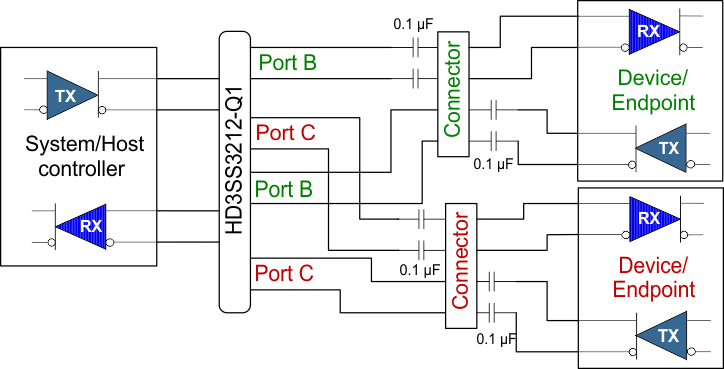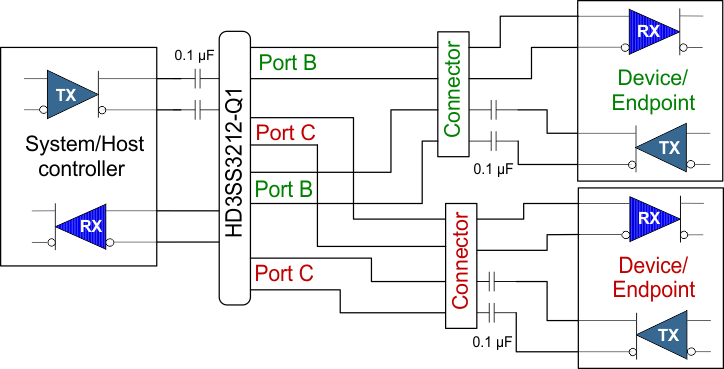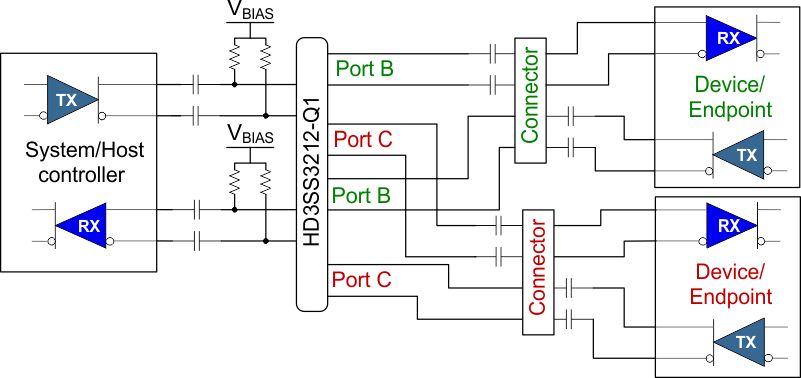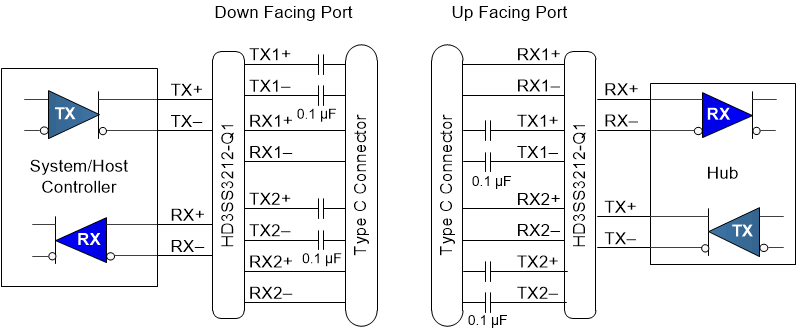ZHCSIR3A Septmeber 2018 – June 2019 HD3SS3212-Q1
PRODUCTION DATA.
9.1 Application Information
The HD3SS3212-Q1 is a generic 2-channel high-speed mux/demux type of switch that can be used for routing high-speed signals between two different locations on a circuit board. The HD3SS3212-Q1 supports several high-speed data protocols with a differential amplitude of <1800 mVpp and a common mode voltage of <2.0 V, as with USB 3.2 and DisplayPort 1.4. The device’s one select input (SEL) pin can easily be controlled by an available GPIO pin within a system or from a microcontroller.
The HD3SS3212-Q1 with its adaptive common mode tracking technology can support applications where the common mode is different between the RX and TX pair. The two USB 3.2 Type C connector applications show both a host and device side. The cable between the two connectors swivels the pairs to properly route the signals to the correct pin. The other applications are more generic because different connectors can be used.
Many interfaces require AC coupling between the transmitter and receiver. The 0201 capacitors are the preferred option to provide AC coupling; 0402 size capacitors also work. Avoid the 0603 or larger size capacitors and C-packs. When placing AC coupling capacitors, symmetric placement is best. The designer should place them along the TX pairs on the system board, which are usually routed on the top layer of the board.
The AC coupling capacitors have several placement options. Because the switch requires a bias voltage, the designer must place the capacitors on one side of the switch. If they are placed on both sides of the switch, a biasing voltage should be provided. Figure 4 shows a few placement options. The coupling capacitors are placed between the switch and endpoint. In this situation, the switch is biased by the system/host controller.
 Figure 4. AC Coupling Capacitors between Switch TX and Endpoint TX
Figure 4. AC Coupling Capacitors between Switch TX and Endpoint TX In Figure 5, the coupling capacitors are placed on the host transmit pair and endpoint transmit pair. In this situation, the switch on top is biased by the endpoint and the lower switch is biased by the host controller.
 Figure 5. AC Coupling Capacitors on Host TX and Endpoint TX
Figure 5. AC Coupling Capacitors on Host TX and Endpoint TX If the common mode voltage in the system is higher than 2 V, the coupling capacitors are placed on both sides of the switch (shown in Figure 6). A biasing voltage of <2 V is required.

The HD3SS3212-Q1 can be used with the USB Type C connector to support the connector’s flip ability. Figure 7 provides the generic location for the AC coupling capacitors for this application.
 Figure 7. AC Coupling Capacitors for USB Type C
Figure 7. AC Coupling Capacitors for USB Type C